Description
Air Jordan is an American brand of basketball shoes produced by American corporation Nike. The first Air Jordan shoe was produced for Hall of Fame former basketball player Michael Jordan during his time with the Chicago Bulls in late 1984 and released to the public on April 1, 1985.[2][3][4][5] The shoes were designed for Nike by Peter Moore, Tinker Hatfield, and Bruce Kilgore.[6][7]
A listing of Air Jordan shoe releases since 1985.[8]
| Model | Year | Notes |
|---|---|---|
|
Air Jordan I |
1985 | The first Air Jordan was produced for use by Michael Jordan. They were Designed by Peter B. Moore, and released during his sophomore season with the Chicago Bulls.[7] Along with iconic release of colorways; including Air Jordan 1 Royal. The Jordan 1 Royal is also the only shoe that Jordan never ever wore on the court. https://www.complex.com/sneakers/2017/03/air-jordan-1-royal-historyThe Air Jordan Metallic, Air Jordan Black Toe and more were alternate designs of the shoe. Whereas all other shoes failed to gain popularity, only the Air Jordan 1 Chicago, which managed to gain any prominence.
Additionally in 1994, Nike came out with the Air Jordan Chicago Rendition, affixed with the Nike Air tag on the tongue. Meanwhile 2 decades without any change this was considered the best retro. The year 2013, Air Jordan 1 again released with Nike Air branding and lasted for 2 years. Finally in 2015, there was a true Chicago 1 fashion having the Nike Air labeling on tongue and no jumpman silhouette. Once again they are re-imagining Chicago Jordan 1 on 29 October 2022.[9] The red and black colorway of the Nike Air Ship, the prototype for the Jordan I, was later outlawed by then-NBA Commissioner David Stern for having very little white on them. (This rule, known as the “51 percent” rule, was repealed in the late 2000s.)[10][11] |
|
Air Jordan II |
1986 | The success of the Air Jordan I encouraged Nike to release a new Air Jordan in 1986 for the new basketball season. Designed by Peter Moore and Bruce Kilgore, the Air Jordan II was unique in that it was made in Italy. In early tests, MJ actually wore a prototype that fused the upper of the original Air Jordan with the cushioning being designed for the new model. The Air Jordan II featured a full-length Air-Sole unit intended to cushion’s MJ’s sore feet. The shoe bore a similar silhouette to the Nike Air Python that would release the following year. The AJ II featured a faux lizard skin and swooping lines that resembled the detailing of a sports car. This design aesthetic would factor into the Air Jordan line later in the series. The AJ II introduced better cushioning with a polyurethane midsole and a full-length encapsulated Nike Air capsule for maximum comfort. The Air Jordan II was the first Jordan not to have the Nike swoosh featured on the upper, though “Nike” was stitched across the heel counter. MJ only got to wear the Air Jordan II for 18 games in the 1986–87 season due to a broken foot. The shoe originally retailed at $100 when it was released from 1986 to 1987. The shoe later re-released, as the Jordan Retro 2, in 1994, 2004–05, 2008, 2010, 2014–18. |
|
Air Jordan III |
1988 | Originally released in 1988, in 2009 the Jordan Brand reintroduced the highly sought after Air Jordan III in the True Blue colorway. It was an international-only release, meaning they were not sold in the US. In 2011, the brand released a Black History Month (BHM) Air Jordan III colorway in commemoration of the 35th anniversary of Black History Month. Also, the same year saw the release of the “True Blue” III on June 4. The Stealth colorway of the III was released in September and the Black Cements were released in November.[12]On February 15, 2020, the most recent version of the shoe Air Jordan 3 SE “Red Cement” was released in celebration of Chicago, Illinois hosting the 2020 NBA All-Star Game. The brand also debuted a Chicago-exclusive version of the colorway. This pair features “Nike Chi” branding on the heel, replacing the traditional “Nike Air” branding.[13] |
|
Air Jordan IV |
1989 | In December 1988, Nike released the Air Jordan IV to the public. Designed by Tinker Hatfield, it was the first Air Jordan released on the global market. It had four colorways: White/Black, Black/Cement Grey, White/Fire Red-Black, and Off White/Military Blue. Nike featured director and actor Spike Lee in ads for the AJ IV. Lee had featured the shoe in his movie Do The Right Thing. The Air Jordan IV re-released in 1999, 2000, 2004, 2006, 2008, 2010–2013 and 2015–2020 with numerous colorways being released nearly every year.[14]Michael Jordan wore the Air Jordan IV when he made “The Shot,” a series winner in Game 5 of the 1989 NBA First Round between the Chicago Bulls and the Cleveland Cavaliers. In 2012 a Cavalier colorway dubbed the “Cavs” was released to honor “The Shot.”
Air Jordan 4 collaboration shoes are some of the rarest and include, the Air Jordan 4 UNDFTD, Eminem x Air Jordan 4 Carhartt, the Wahlberger 4, and the Travis Scott friends and family Purple. |
|
Air Jordan V |
1990 | The Air Jordan V was released in February 1990, designed by Tinker Hatfield again. Some elements were carried over from the Air Jordan IV, but overall they were a completely new look. Some of its new features include a reflective tongue (with a unique protruding design and look), translucent rubber soles and lace locks.[15]The Air Jordan V saw a lot of use in popular sitcom The Fresh Prince of Bel-Air. During many episodes Will Smith wore the Metallic Silver, Grape, and Fire Red colorways. To pay tribute to his character, Jordan released the Air Jordan 5 Bel Air in 2013 and 2020.[16] |
|
Air Jordan VI |
1991 | The VI was the first shoe used by the protagonist of Slam Dunk, Hanamichi Sakuragi.[17] Nike released special versions of both the VI and the Jordan Super.Fly 3 featuring artwork from the series in 2014. The VI also had Sakuragi’s number 10 embroidered on the side of the heels.[18] Various other models in the Air Jordan line are featured in the series, including the original (to which Sakuragi eventually switched), the V, and the XII (both worn by Sakuragi’s rival, Kaede Rukawa).[19] |
|
Air Jordan VII |
1992 | The Air Jordan VII was released in 1992 with a new design by Tinker Hatfield. This shoe introduced the huarache technology which allowed the shoes to better conform to the user’s foot. A few things were no longer featured on the new model, such as the visible air sole, the Nike Air logo, and the translucent soles. This was the first Air Jordan in the line that did not have any distinctive “Nike Air” on the outer portions of the shoe. The “Nike Air” branding was still on the in-soles, which Air Jordans VIII–XI also had. The VIIs were also known for a successful ad campaign in which Bugs Bunny appeared alongside Michael Jordan to market the shoes.When Jordan went to compete at the 1992 Summer Olympics to play for the US Men’s Basketball Team (also known as the “Dream Team“), Nike released a special Olympic color combo of the Air Jordan VII model which had Jordan’s Olympic jersey number 9, instead of the usual “23” found on other colorways.
Various models of the Air Jordan VII were re-released in 2002, again in 2004, and again with different colors in 2006. In 2011 the Air Jordan VII saw releases in the “Orion” and “Bordeaux” colorways. The “Olympic” and “Charcoal” (commonly referred to as Raptors) were re-released in 2012. The shoe was retro-ed in 2002, 2004, 2006, 2008–2012, and 2015–2017. |
|
Air Jordan VIII |
1993 | The Air Jordan VIII was released to coincide with the 1992–1993 NBA season. The eighth model of the Air Jordan was noticeably heavier than its predecessors. The Air Jordan VIII model became known as the “Punisher” because of the advanced basketball ankle support and enhanced traction. This shoe contains a full-length air sole, polyurethane midsole, polycarbonate shank plate, and two crossover straps (for added support and more custom fit). The shoe was retro-ed in 2003, 2007, 2008, 2013, and 2015–2017. |
|
Air Jordan IX |
1993 | Originally released in November 1993, the Air Jordan IX model was the first model released after Michael Jordan’s retirement. Jordan never played an NBA season wearing these shoes. This model was inspired by baseball cleats that Jordan wore when playing minor-league baseball. The shoe was retro-ed in 2002, 2008, 2010, 2012, and 2014–2018.Like the VII and VIII models, the Air Jordan IX featured an inner sock sleeve and nubuck accents. The sole featured different symbols and languages of different countries. The Air Jordan IX has been the shoe chosen to adorn Jordan’s feet for his statue outside of the United Center in Chicago.
In popular culture, the children’s movie The Little Rascals depicted one of the bullies, Butch, wearing a pair of these shoes. American rap icon Tupac Shakur also wore Air Jordans in a popular “Thug Life” photo in 1993. |
|
Air Jordan X |
1994 | This was released in 1994 in three colorways – White/Black/Light Steel Grey ‘Steel Grey,’ White/Black/Dark Powder Blue ‘Powder Blue,’ Black/Dark Shadow/True Red ‘Shadow.’ More followed: Powder Blue (worn by University of North Carolina at Chapel Hill‘s Men‘s and Women‘s basketball teams), Orlando Magic*, New York Knicks*, Seattle SuperSonics*, and Sacramento Kings*. It was the first Air Jordan to feature a lightweight Phylon midsole. The shoe also featured all of Michael Jordan’s accomplishments up to his first retirement on the outsole.Rapper and Actor Max Wore Air Jordans 10 In December 17 1994
In 2012, the Air Jordan X was re-released. They are dubbed the “Chicago Bulls”, as they are part of a regional pack (City Pack), representing five teams. The lacing and tongue are completely black, and the red inner lining contrasts with the red inserts on the outsole. The outsole’s design features a striped (wavy) design, which list many of Jordan’s accomplishments. They retailed at $160. The Air Jordan X was released again in an OVO collaboration in 2015 and 2016, releasing in white and black colorways respectively with stingray detailing. The shoe was retro-ed in 2005, 2008, 2012–2016, and 2018. |
|
Air Jordan XI |
1995 | This model was designed by Tinker Hatfield. When the shoe launched, Michael Jordan (retired from basketball by then) was with the Birmingham Barons in baseball’s minor baseball leagues. Hatfield designed the sneaker waiting for Jordan to come back and hoping he would play in them.The ballistic mesh upper of the sneaker was meant to make the Air Jordan XI lighter and more durable than past sneakers. Further changes came with the use of a carbon fiber spring plate in the translucent “frosty” outsole, giving the shoe better torque when twisting on the court. The highlight and arguably best-known aspect of the shoe is its patent leather mudguard. Patent leather was lightweight compared to genuine leather and also tended not to stretch as much – a property to help keep the foot within the bounds of the foot bed during directional changes on the court. The patent leather gave the XI a “formal” look. When this shoe released, some wore this model with business suits instead of dress shoes.
The sneakers were only samples in 1995 when Jordan decided to come back to the NBA. Hatfield and Nike discouraged Jordan from playing in them, but once they were produced, he couldn’t resist. Also noteworthy, Jordan violated league dress code by wearing the shoes, as his teammates wore all-black shoes. It wasn’t the first time Jordan had run afoul of NBA footwear rules, having broken them with his very first signature shoe in 1985. He was fined $5,000 for not following the Bulls’ colorway policy with the AJ XI. After the fine, Nike made him a pair of the shoes in a black/white/concord colorway for the series against Orlando; Jordan wore Penny Hardaway‘s signature black Nike Air Flight shoes for Game 3 while said colorway was under production. A similar black/white/royal blue colorway was released to the public at the end of 2000. The colorway was changed for the public release because the concord purple had looked like royal blue on television. Jordan wore the Air Jordan XI on the way to helping the Chicago Bulls claim the 1995–96 NBA Championship. He also wore the XI white Columbia colorway in the 1996 NBA All-Star Game and was selected MVP of the game. The shoes received more media exposure when Jordan wore the Air Jordan XI model in the 1996 animated movie Space Jam. These shoes were eventually released in 2000 and re-released in 2009 with the nickname “Space Jams.” The concord purple was changed to royal blue for the released versions of the shoe. The Air Jordan XI was originally released from 1995 to 1996. It was retro’d in 2000, 2001, 2003, 2006–2018 and 2019. The Air Jordan XI is one of the most popular Air Jordan in the series and has released almost ritualistically every December since 2008, selling out in minutes. It also is Hatfield’s favorite. With the Air Jordan XI being one of the most popular Jordan, supply is very limited and would cause fans to line up outside of stores before releases. |
|
Air Jordan XII |
1996 | The Air Jordan XII was originally released from 1996 to 1997. It was retro-ed in 2003, 2004, 2008, 2009, 2011–2013, 2015–2018, and its most recent[when?] retro in 2019.[20] |
|
Air Jordan XIII |
1997 | In 1997, Air Jordan XIIIs were released to the public. This model was known for its cushioning along the feet, designed by Hatfield. The Black Panther was the inspiration for the Air Jordan XIII, the sole resembles the pads on a panther’s paw. But also the panther is the hologram on the back of the shoe which imitates a panther’s eyes in the dark when light is shined at them. They were re-released in 2005, which coincided with the release of the Air Jordan 8s shoe.In the movie He Got Game, the Air Jordan XIII was worn by Jake Shuttlesworth (Denzel Washington). Ray Allen, who played Jake’s son Jesus in the film, wore them when he broke Reggie Miller‘s all-time record for made three-point shots during a game against the Lakers in Boston during the 2011 season. The Jordan Brand re-released the Air Jordan XIII at the end of 2010, which included the French Blue/Flint Grey, White/Red-Black, “Playoff” color way and the Black/Altitude Green color way. In 2017, Jordan Brand released the “History of Flight” colorway. This colorway is from the 2009 World Basketball Festival, where the “History of Flight” collection was revealed to celebrate Jordan’s 25th anniversary.
The shoe was retro-ed in 2004, 2005, 2008, and 2010–2018. |
|
Air Jordan XIV |
1999 | Inspired by the Ferrari 550 M which Michael Jordan owned, the Air Jordan XIV was originally released from 1997 to 1999. It was re-released in 2005, 2006, 2008, 2011, 2012 and 2014–2018.The Air Jordan XIV co-styled by Hatfield and Mark Smith was made race ready and equipped with the Jordan Jumpman insignia on a Ferrari shaped badge. In addition, these shoes include breathable air ducts on the outer sole. The color scheme of predominant black accentuated with red was nicknamed “The Last Shot” because Michael Jordan wore them as he hit the game winning shot over Bryon Russell, of the Utah Jazz, in his final game with the Chicago Bulls in the 1998 NBA Finals.
There are 14 Jumpman logos on Air Jordan XIV’s—7 on each shoe—corresponding the shoes’ number in the series. They can be found in the following places:
|
|
Air Jordan XV |
1999 | This was the first shoe after Jordan’s retirement. The design of the XV’s originated from the aircraft prototype X-15, which was developed by NASA during the 1950s. The sides of the XV were made from woven kevlar fiber. The Jordan XVs were the first Air Jordans to be negatively received in a while (the last being the Air Jordan 2s), because the quality on the Jordan shoes was bad.[21] |
|
Air Jordan XVI |
2001 | The shoe was said to be stiff and that the shroud/gaiter could easily fall off when playing basketball. The black/red and white/midnight navy versions of the shoe both featured patent leather which very easily creased and cracked.[22] |
|
Air Jordan XVII |
2002 | This pair of Jordans come equipped with Keefer, which held the shoes and a compact disc containing the Air Jordan XVII song. The retail price of the shoe was US$200. The defining functional design element of the Air Jordan XVII model, which was later replicated on the Air Jordan XXIII model, was the reinforced mid-sole which provided a sturdy and stable chassis for the shoe. They were made in four mid top colors and three low-top colors.Some of the original colorways are:
The shoe was retro-ed in 2008 and 2016. One of the retro-ed colorways is:
|
|
Air Jordan XVIII |
2003 | The Air Jordan XVIII shoe was released in 2003, and was the shoe for Jordan’s last season, in which he played for the Washington Wizards.The shoe was designed by Air Jordan Senior Footwear Designer, Tate Kuerbis, a person that had been part of the Jordan footwear design team since 1999 and with Nike since 1995. The inspiration for the design came from a number of things; sleek racing lines of the auto world, carbon fiber-based monocoque of F1 race cars, race car driving shoes (rubber heel wrap) and Fine Italian dress shoes (bold stitching on the soles).
The shoe was retro-ed in 2008. |
|
Air Jordan XIX |
2004 | Released in 2004, this is the first Jordan release after his third, and final, retirement which came after the 2002–03 NBA season. The design was inspired by the black mamba snake, and two original colorways where released: white/flint gray and black/red. Three regional colorways and three special edition colorways were released. They consisted of the East, West, and Midwest edition for regular and West, East, and Olympic for the SE (special edition).The Air Jordan XIX used innovative materials. The upper section of shoe was developed in collaboration with the global materials consultancy Material ConneXion, who sourced Nike a sleeving normally used in architectural applications for protecting PVC pipes from bursting. In theory, this allowed for a shoe without laces, because the sleeving does not stretch. Nonetheless, the Air Jordan XIX model did include a set of laces behind the sleeve to better secure the shoe. They are the lightest Air Jordans ever made.
The shoes appeared on the sitcom My Wife and Kids, in the episode “Fantasy Camp: Part 2”, when the protagonist Michael Kyle (Damon Wayans) steals it from Jordan’s hotel room and uses it to play against Jordan himself later in the episode. Michael Jordan wears “AJ IV Cool Grey” in the episode. The shoe was retro-ed in 2008. |
|
Air Jordan XX |
2005 | The Air Jordan XX was also inspired by bicycling shoes. The strap was placed in the center of the shoe over the laces. It also helped to create a tighter fit and increased support. The shoe was retro-ed in 2008 and 2015. |
|
Air Jordan XXI |
2006 | The Air Jordan XXI model of shoes was designed by D’Wayne Edwards and inspired by sport touring vehicles. The shoe features lower-foot air grilles, double-overlasted Phylon midsole, a carbon fiber shank plate and a seamless diamond-quilted booty. It also has a tenable I.P.S. suspension system that lets the wearer choose between Zoom and Encapsulated air. The Air Jordan XXI was originally released in 2006. It was retro-ed in 2008.The Air Jordan XXI was introduced on television by the “Second Generation” advertisement. |
|
Air Jordan XX2 |
2007 | The promo commercial for the XX2 was directed by Mark Romanek.[23] |
|
Air Jordan XX3 |
2008 | The Air Jordan XX3 was designed by Tinker Hatfield. It was a unique model, being the first basketball shoe to be included in the “Nike Considered” category, for using materials from not more than 200 miles (320 km) from a Nike Factory. It features a hand-stitched exterior, full-length bootie, carbon fiber shank plate, the last to feature interchangeable IPS pillars, and an articulated chassis. The shoe was released on January 25, 2008, and was the last Air Jordan until the XX8 to have Roman numeral identification.The shoe was retro-ed in 2015–2016. |
|
Air Jordan 2009 |
2009 | The Air Jordan 2009 (Mk 24) was designed by Jason Mayden and was the first Air Jordan model named after the year of its release rather than its numbered system. Inspired by Jordan’s defensive focus, the shoe incorporates Articulated Propulsion Technology used by Paralympian runners. It also features a durable pleated silk upper, protective TPU chassis, carbon fiber arch plate and Zoom Air structure. The shoe was released on January 31, 2009. The shoe has not been retro-ed. |
|
Air Jordan 2010 |
2010 | This is the 25th anniversary of the Air Jordan brand, and although commonly called the Jordan 2010s, is also referred to as Air Jordan XX5/XXV. This model of shoe was announced on November 12, 2009, for a release date of February 13, 2010, retailing for US$170 (equivalent to $211.25 in 2021). Dwyane Wade is endorsing the AJ 2010. The shoe has not been retro-ed.The base of the each mid-sole has stylized text that when combined reads: “I’ve failed over and over and over again in my life. And that is why I succeed.” This quote was originally attributed to Michael Jordan, and is a reference to an advertising campaign that aired in 1997 with Jordan detailing his failures that led to his success in his career. |
|
Air Jordan 2011 |
2011 | The Air Jordan 2011 (Mk 26) was endorsed by Dwyane Wade in 2011, Jordan Brand decided to keep the fans happy with the release of the Air Jordan 2011. The shoe has inter-changeable insoles – The Red, “Explosive” one is claimed to symbolize power, and a Blue, “Quick” one, supposedly for quickness. Four colorways of the shoe were released on February 19, 2011, in correspondence with the 2011 All Star Game. The first colorway was White/Black. There were also White/Red and White/Blue colorways that coincided with the East/West Jersey Colors. The “Year of the Rabbit” colorway was a limited release that celebrated of Michael Jordan’s Chinese zodiac sign, coinciding with the current zodiac sign, the Year of the Rabbit.The 2011 has a unique design along both sides of the shoe. It is a star-constellation pattern that also serves as breathing holes for the shoe to keep it well ventilated. It uses patent leather wrapped around the shoe. The shoes are hand burnished and crafted. A dress shoe that feels similar to the XI was reported to be the goal.
The shoe has not been retro-ed. |
| Air Jordan 2012 | 2012 | Air Jordan 2012 (Mk 27) offers six customization configurations. Two interchangeable sleeves and three insoles adapt to different playing styles. The Deluxe model was launched on February 8, while the customization Flight models were released on February 25, 2012. It was the final Air Jordan model to be named after the year it was released as the numbered system returned in 2013 with the Air Jordan XX8.The Air Jordan 2012 was originally released in 2012. It has not been retro-ed. |
| Air Jordan XX8 | 2013 | The Air Jordan XX8, designed by Tinker Hatfield, was released on February 16, 2013. This premiere model featuring a mostly black upper and volt Dynamic Fit bootie. A heel and forefoot Nike Zoom unit in combination with the new Jordan Flight Plate, Dynamic Fit straps for increased support, a carbon fiber heel counter for additional support, and its most notable feature, the mesh upper for flexibility and ventilation. Jordan Brand has decided for 2013 to returning to the Air Jordan numbered order after having stopped at XX3. The Air Jordan 2012 featured different technology which including interchangeable insoles for various styles of play, a concept introduced with the Kobe System. The exterior shroud gives the shoe a sleeker look than any other and is 8 inches high on the ankle but unzips and folds down revealing the bright volt green interior. |
| Air Jordan XX9 | 2014 | The Air Jordan XX9, also designed by Hatfield, released in September 2014 in both an elephant print and a knit edition. The shoe has already been debuted in the NBA by Russell Westbrook and Kawhi Leonard. The shoe has Flight Web for superior lockdown, a performance woven upper for comfort, support, strength, and protection, and a re-engineered Flight Plate. The XX9 also released in a pack alongside the iconic Air Jordan XI on December 23, 2014, called the “Ultimate Gift of Flight” pack.[24]Jordan released two versions of this shoes. The regular cut and the low version. Some of the colorways released in low version are buckets, Chicago bulls, UNC, and infrared. |
| Air Jordan XXX | 2016 | The Air Jordan XXX (30) debuted on January 14, 2016, at an exclusive media event in Chicago. It was again designed by Tinker Hatfield. The first colorway of the shoe released on February 16.[25] The shoe consists of an upper and outsole very similar to that of the XX9 of the previous year. The upper is a combination of performance woven and flyknit that is new for the brand in 2016, and also has a flyknit-constructed ankle collar that extends slightly past where the collar of the shoe would normally be. Jordan brand has also brought back functional Dynamic Fit in the lacing system. The outsole/midsole is almost identical to the XX9, with very minor technical tweaks. The outsole boasts a more noticeable change, with a different traction pattern unique to this shoe, while the midsole remains almost entirely the same. The only difference in the midlsole cushioning setup from the Jordan XX9 is a material change in the FlightPlate setup, which is now named FlightSpeed and is constructed of a plastic rather than carbon fiber for more flexibility while remaining structural integrity. |
| Air Jordan XXXI | 2016 | The Air Jordan XXXI (31) was unveiled on July 20, 2016. The sneaker is heavily influenced by the Air Jordan 1’s having a leather upper and both a Nike swoosh and a Jumpman plus a Jordan “Wings” logo.[26] Its first retail debut was on September 3, 2016, in the “banned” colorway for $185 alongside its air Jordan 1 counterpart.[26] Notable appearances of the AJ 31 include the “USA” colorway worn during the 2016 Olympic basketball tournament by members of team USA.[27] Basketball at the 2016 Summer Olympics – Men’s team rosters.Some of the colorways released are Camo, QUAI 54, Black/Gold, Chicago Away, Chicago Home, Black/White, Midnight Navy, Jordan Brand Classic, and WHY NOT that celebrates Russell Westbrook’s fashion sense. |
| Air Jordan XXXII | 2017 | The Air Jordan XXXII (32) was first released on September 23, 2017. This model is heavily influenced by the Air Jordan 2. It also included a Jordan “Wings” logo. It first came out in the “Rossa Corsa” colorway. A special “Banned” colorway was released on October 18, 2017, to coincide with the 31st anniversary for when the NBA banned the original AJ I black and red colorway. Another special edition called the “Russ” colorway was released to celebrate Russell Westbrook’s sponsorship with the Jordan brand. Jordan brand released 2 types of this shoe, the original mid length cut and low cut. Some of the colorways they released for low version are freethrow line, camo, like mike, wheat, wing it, and last shot. |
| Air Jordan XXXIII | 2018 | The Air Jordan XXXIII (33) was released on October 18, 2018. This is the first Air Jordan model to go laceless.[28] |
| Air Jordan XXXIV | 2019 | The Air Jordan XXXIV (34) was released on September 25, 2019. This would have multiple details such as a commemorative date for the brand’s 30th anniversary.[29] |
| Air Jordan XXXV | 2020 | The Air Jordan XXXV (35) debuted in the Fall of 2020 with a distinct new shape. The model focused on weight reduction to provide a responsive basketball shoe.[30] Additionally, the Eclipse Plate 2.0 radically transformed the model, where an area of the midfoot had a hole to provide stability, bounce, and comfort.[31] The Air Jordan had a large collaboration from current NBA players such as Jayson Tatum and Zion Williamson, both having their own colorways, along with other prominent NBA players. |
 Air Jordan XXXVI Air Jordan XXXVI |
2021 | The Air Jordan XXXVI (36) was first-teased by German-American hooper Isatou “Satou” Sabally via social media, the model made its official on-court debut on March 25, 2021.[32] |
| Air Jordan XXXVII | 2022 | The Air Jordan XXXVII (37) was released on July 28th 2022.[33] |

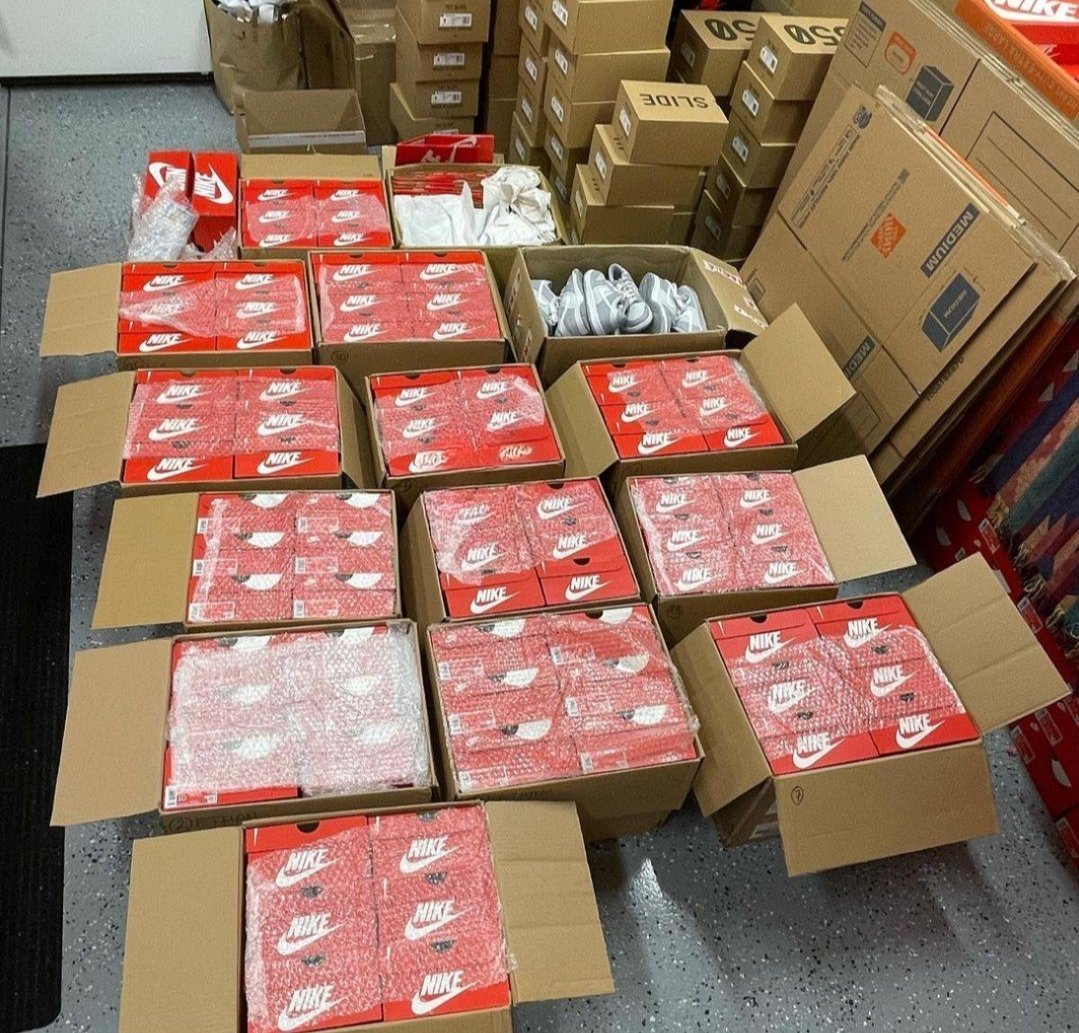
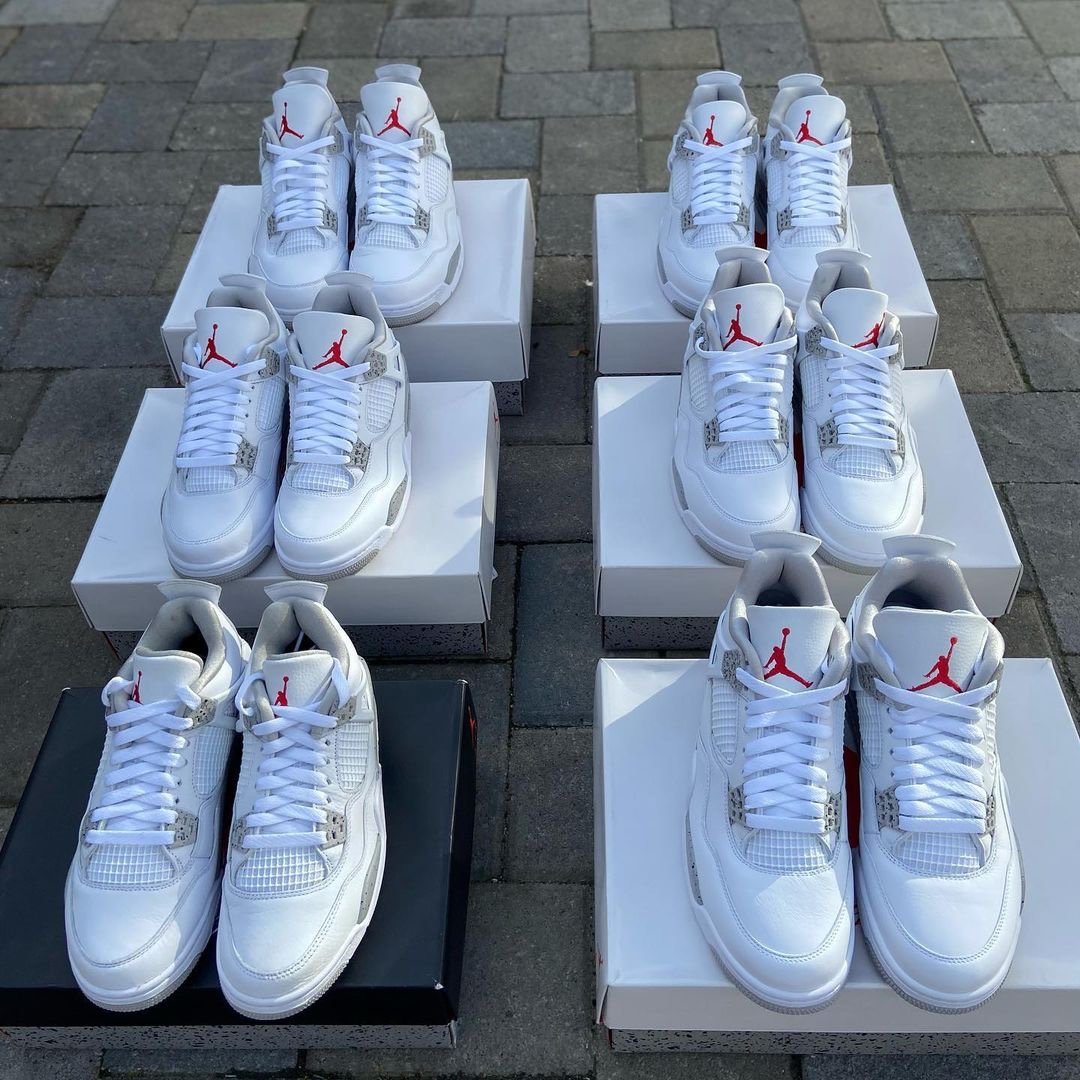


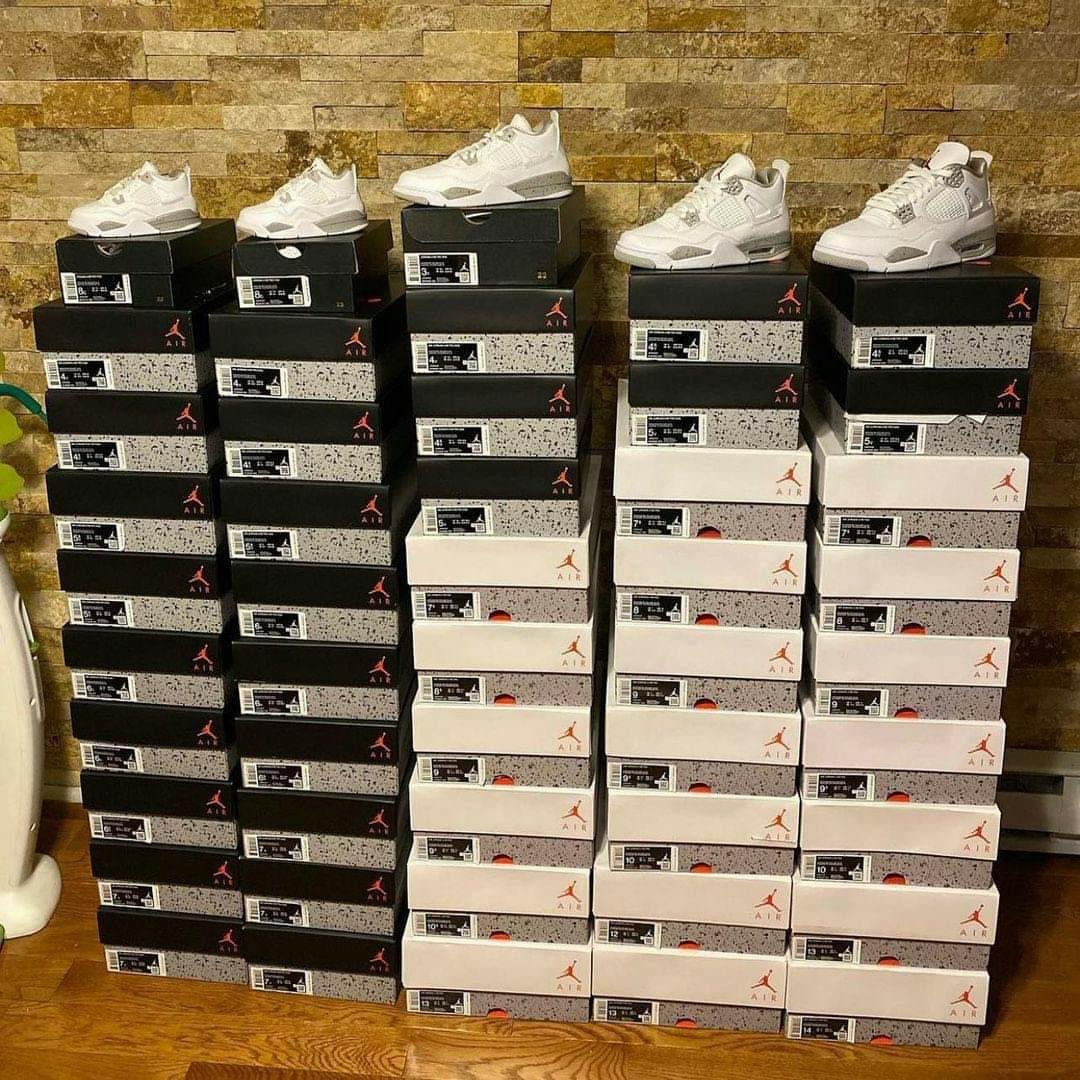
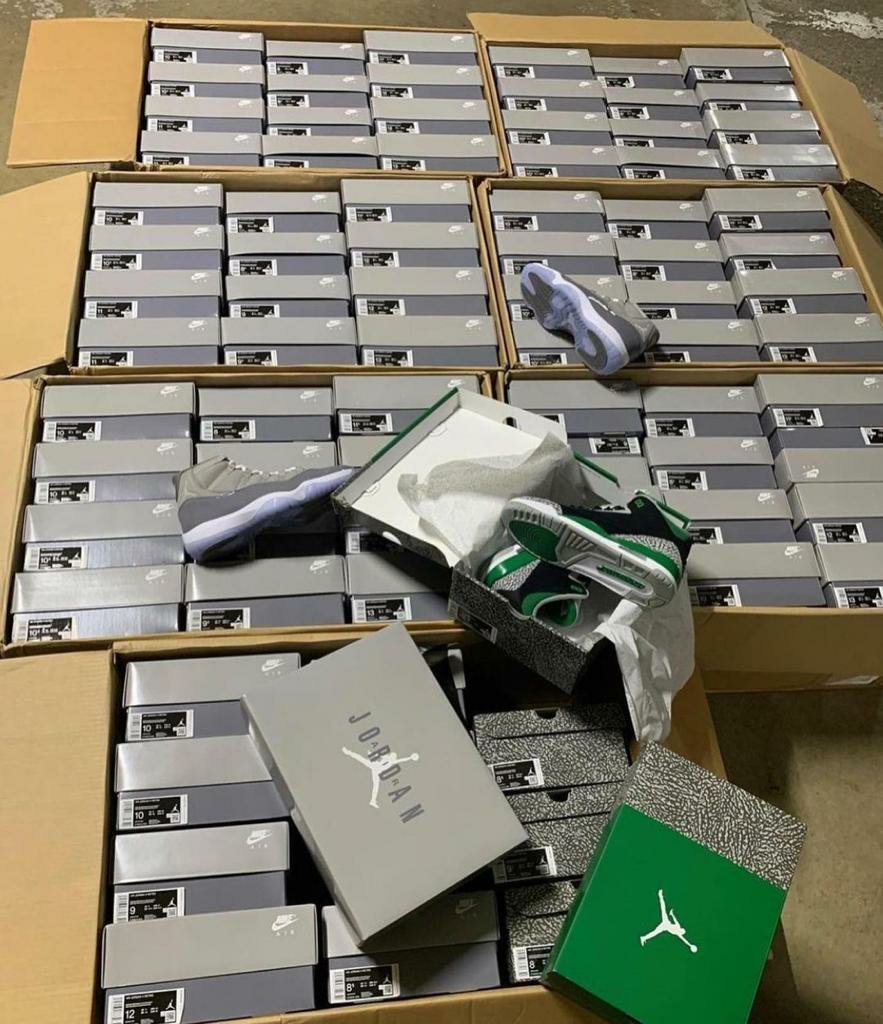
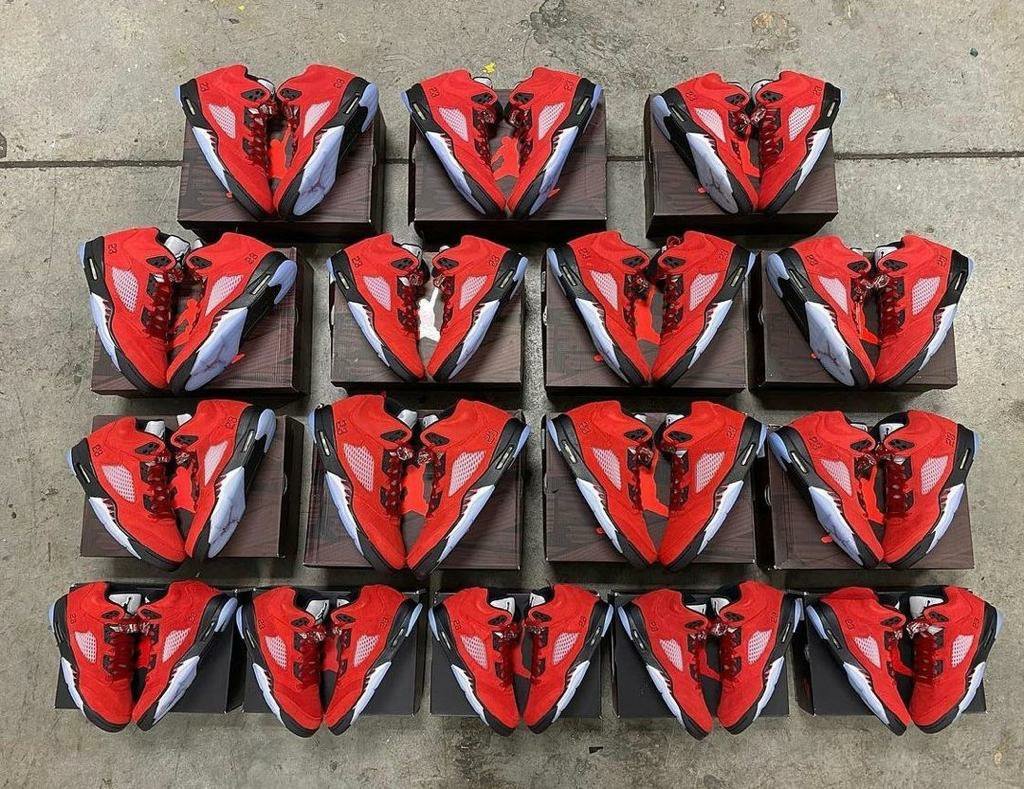




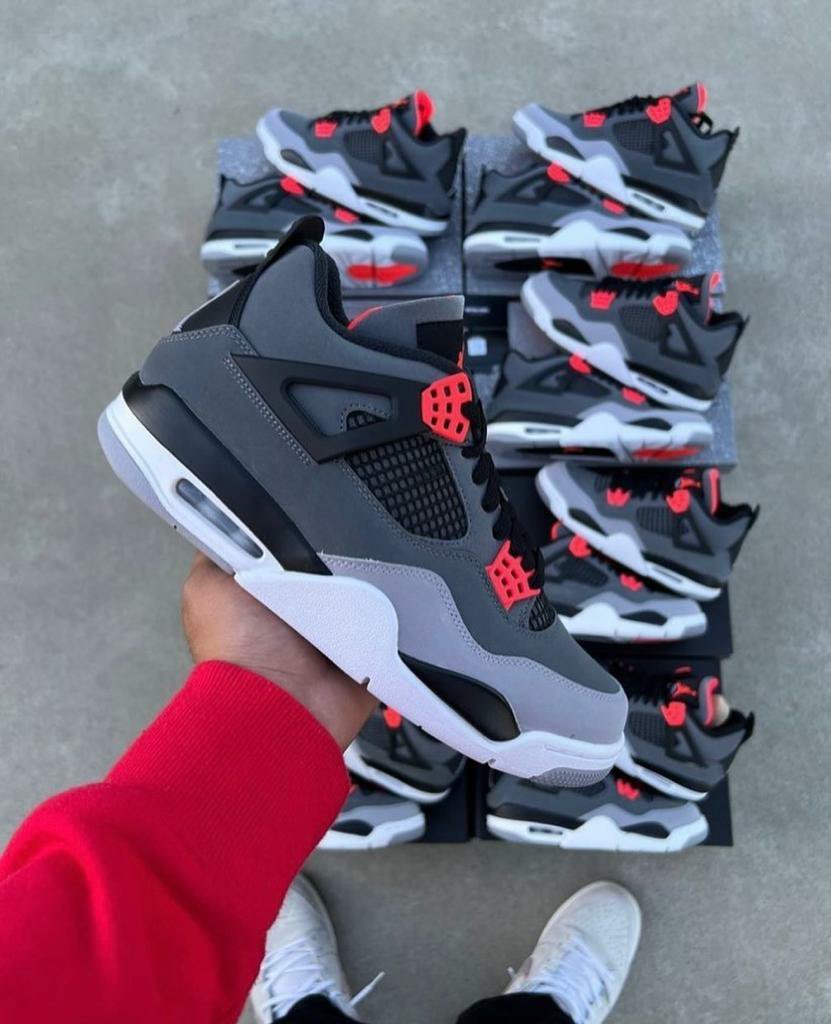
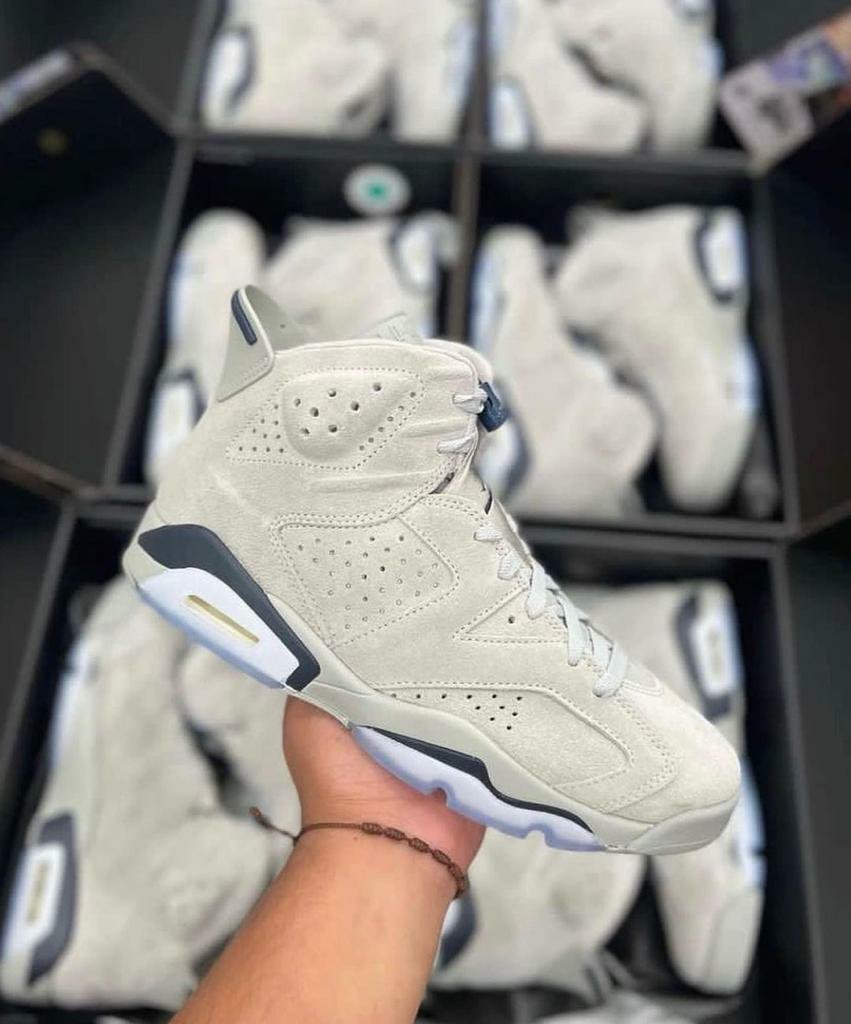




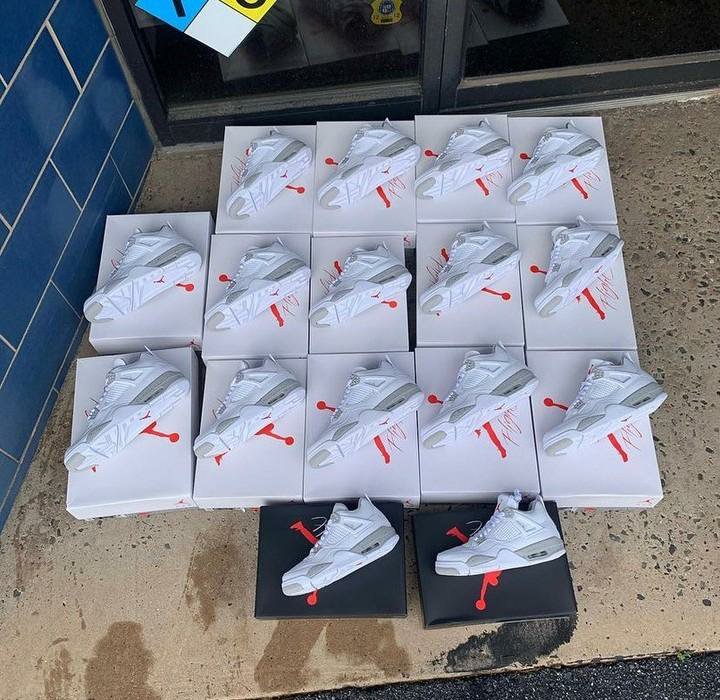


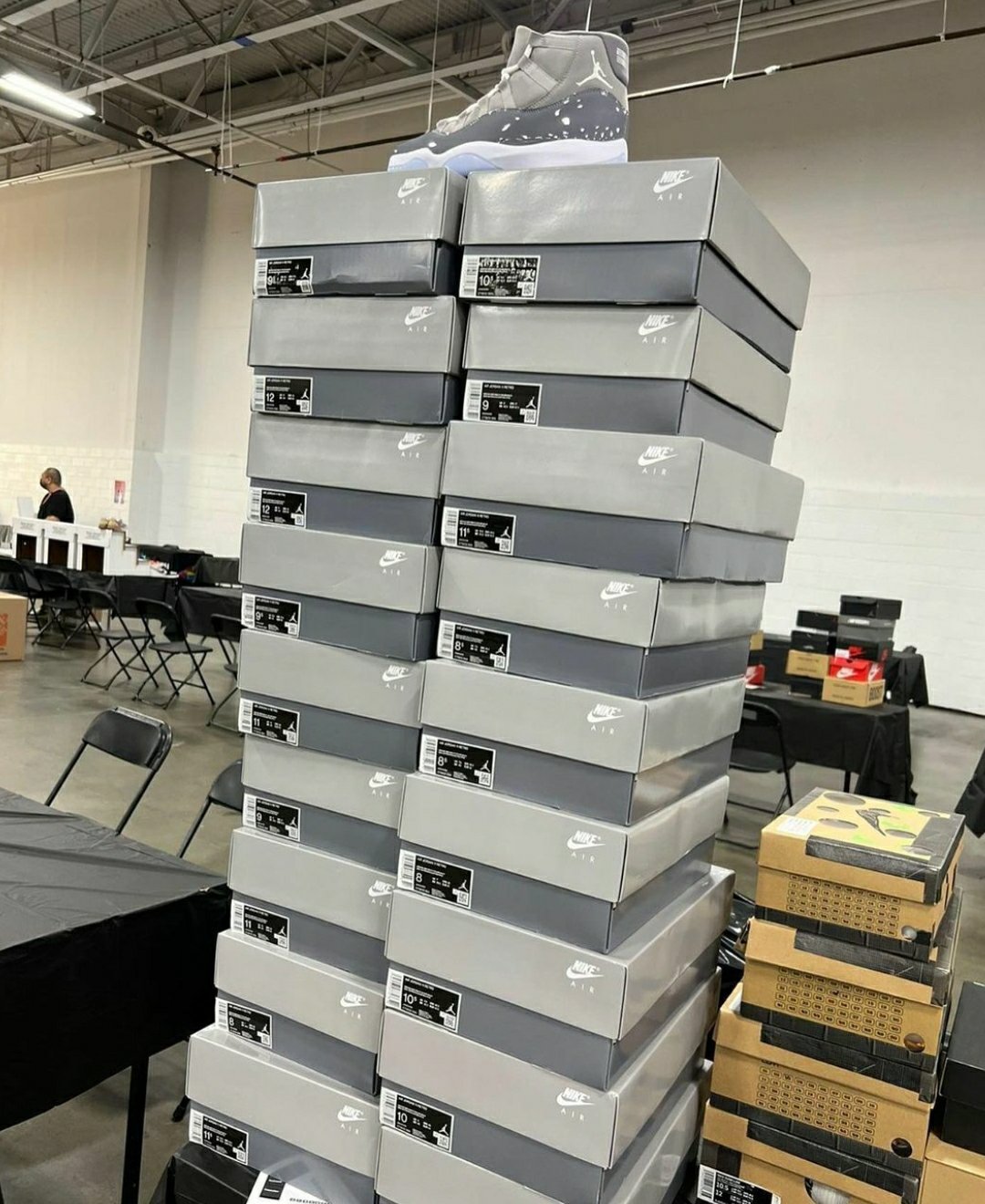

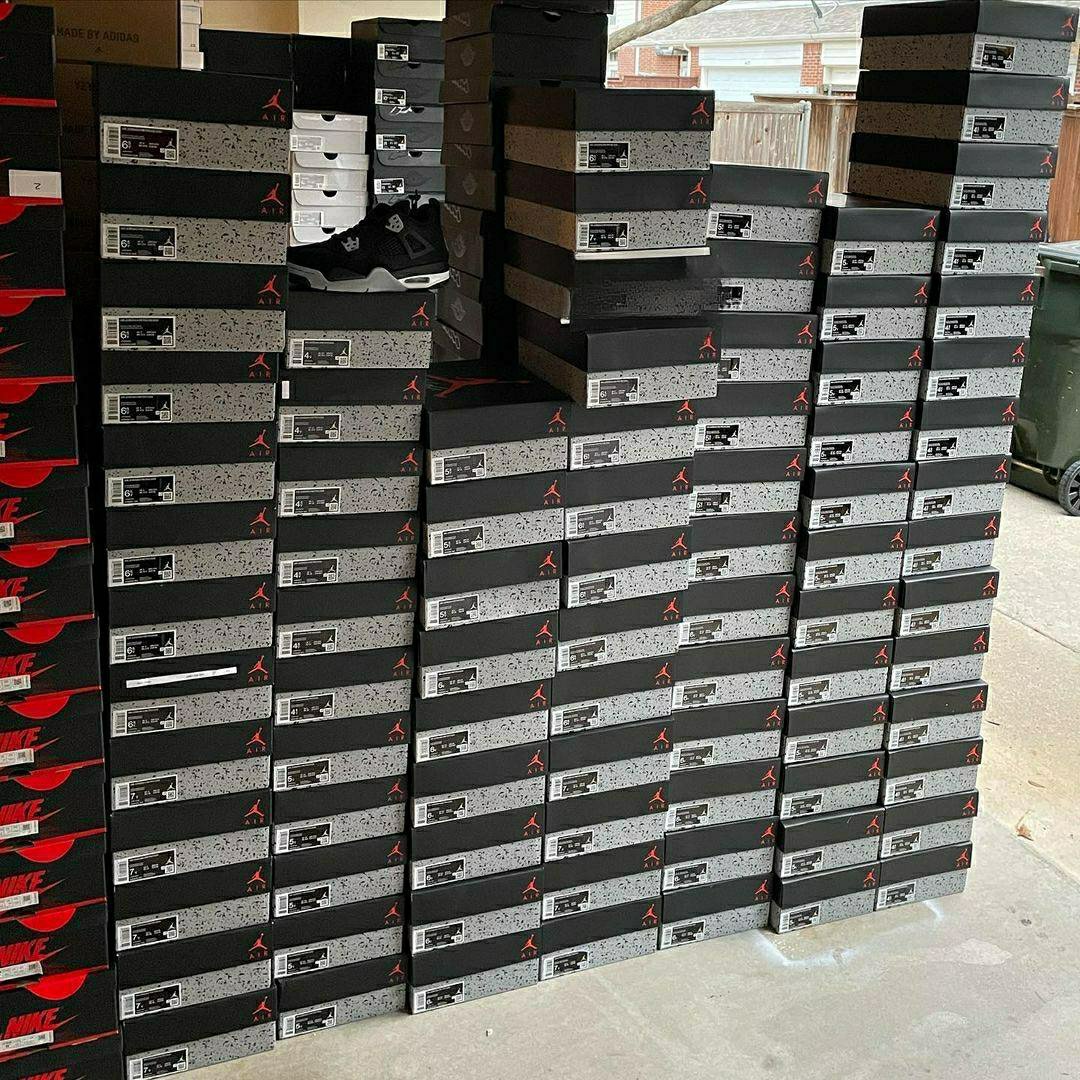



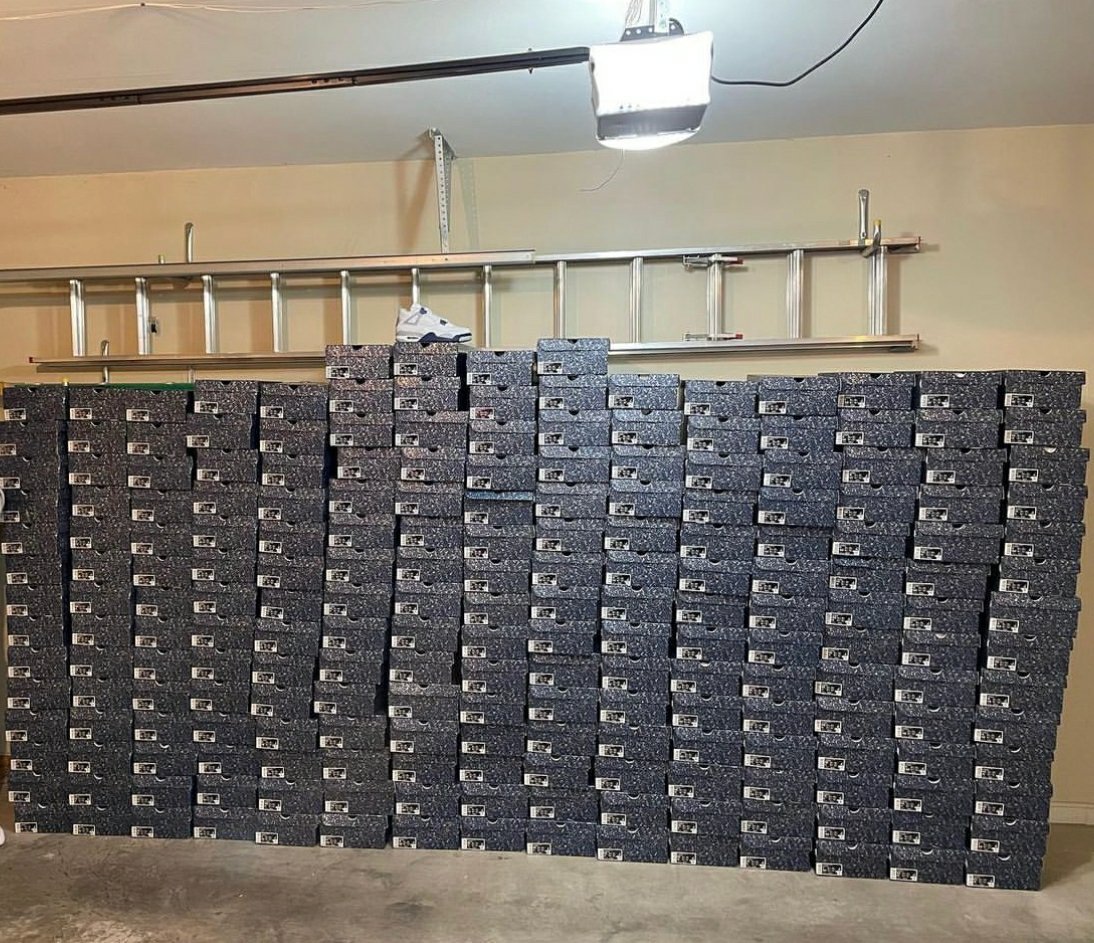


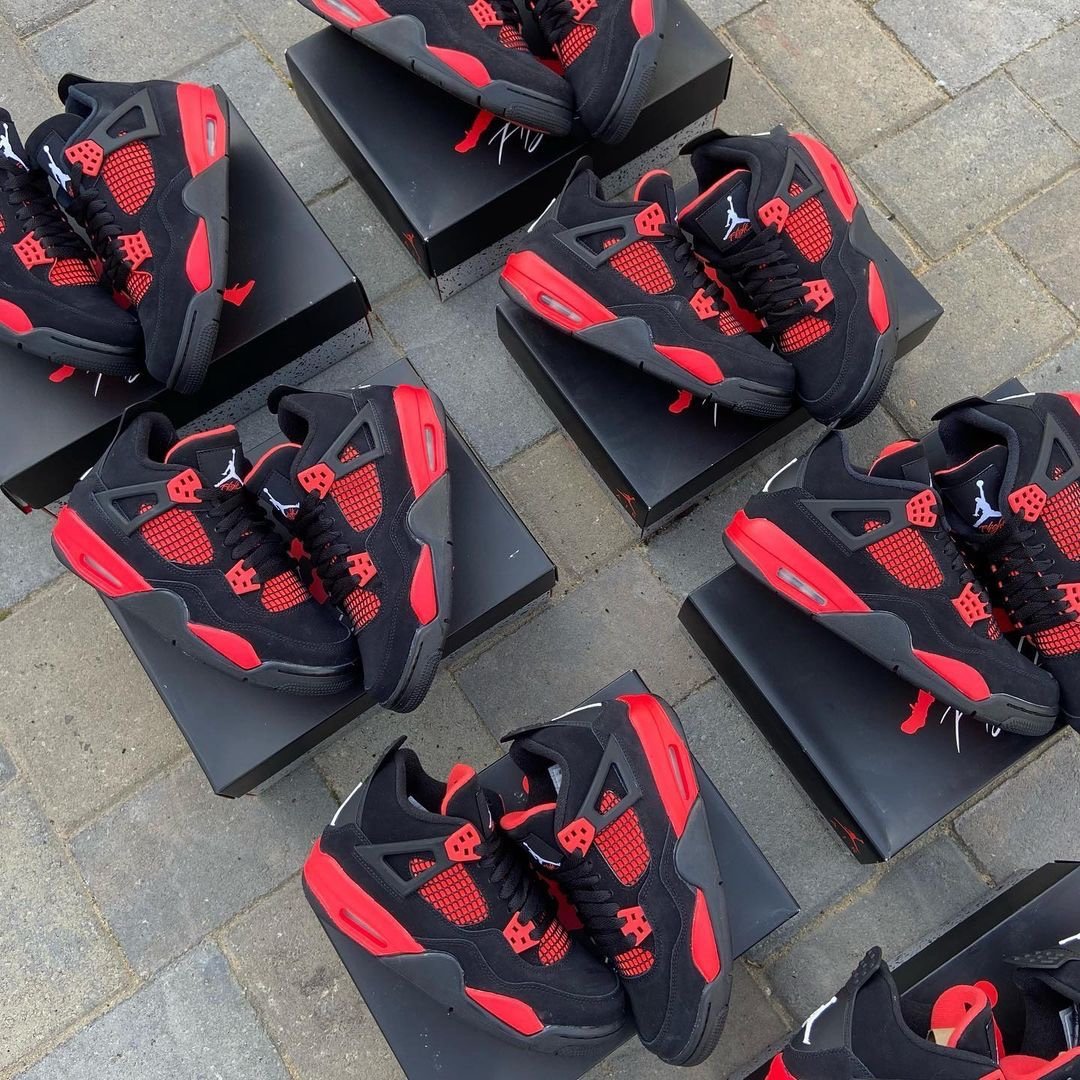
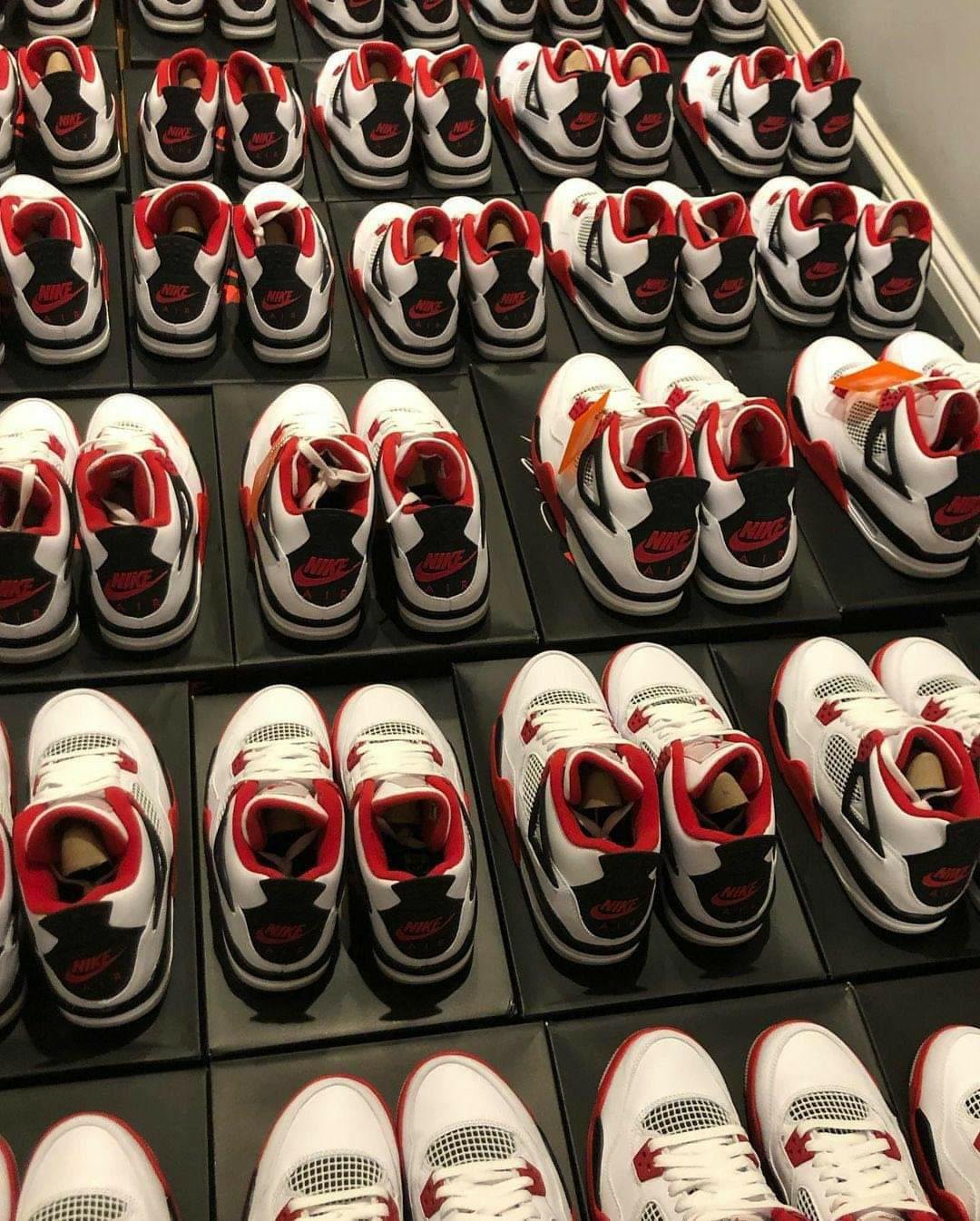
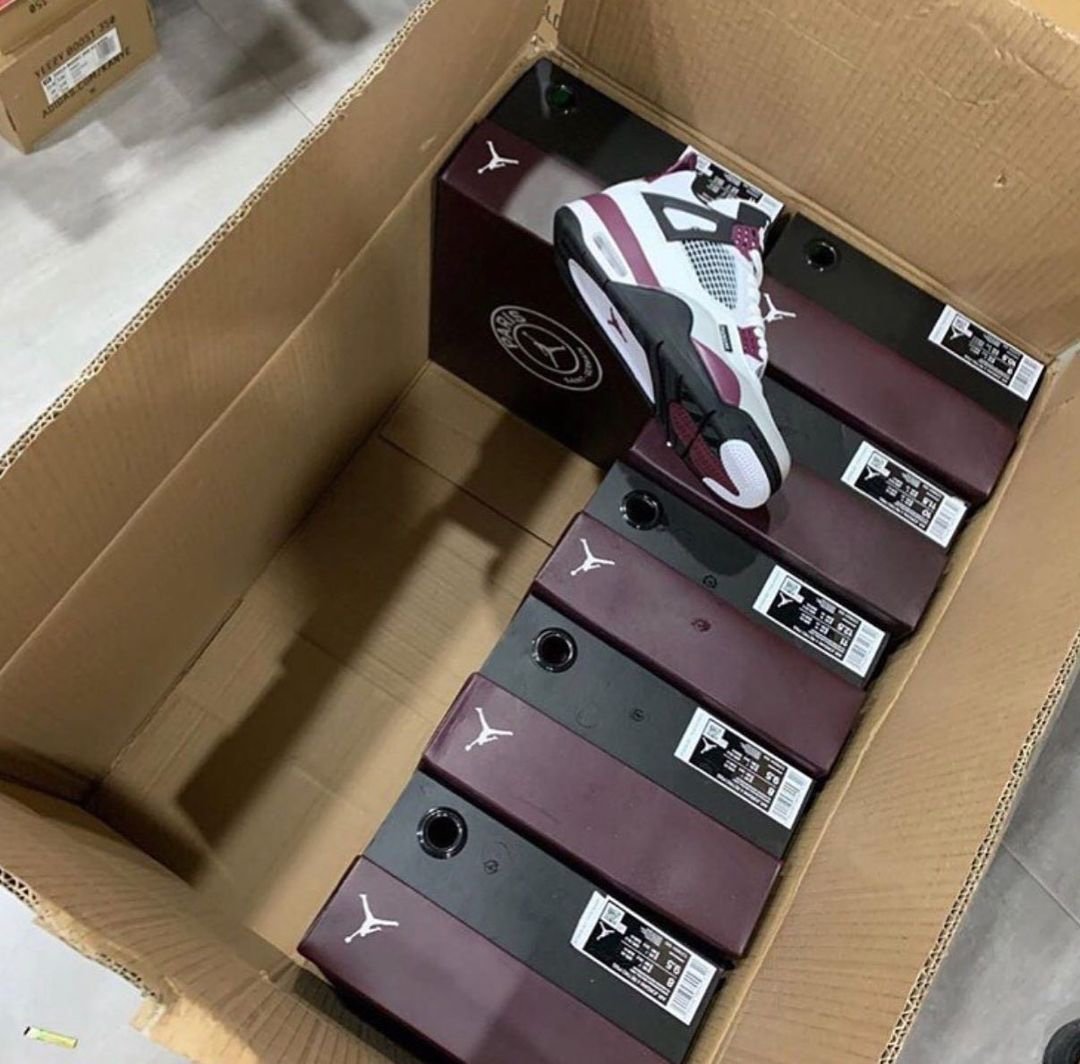
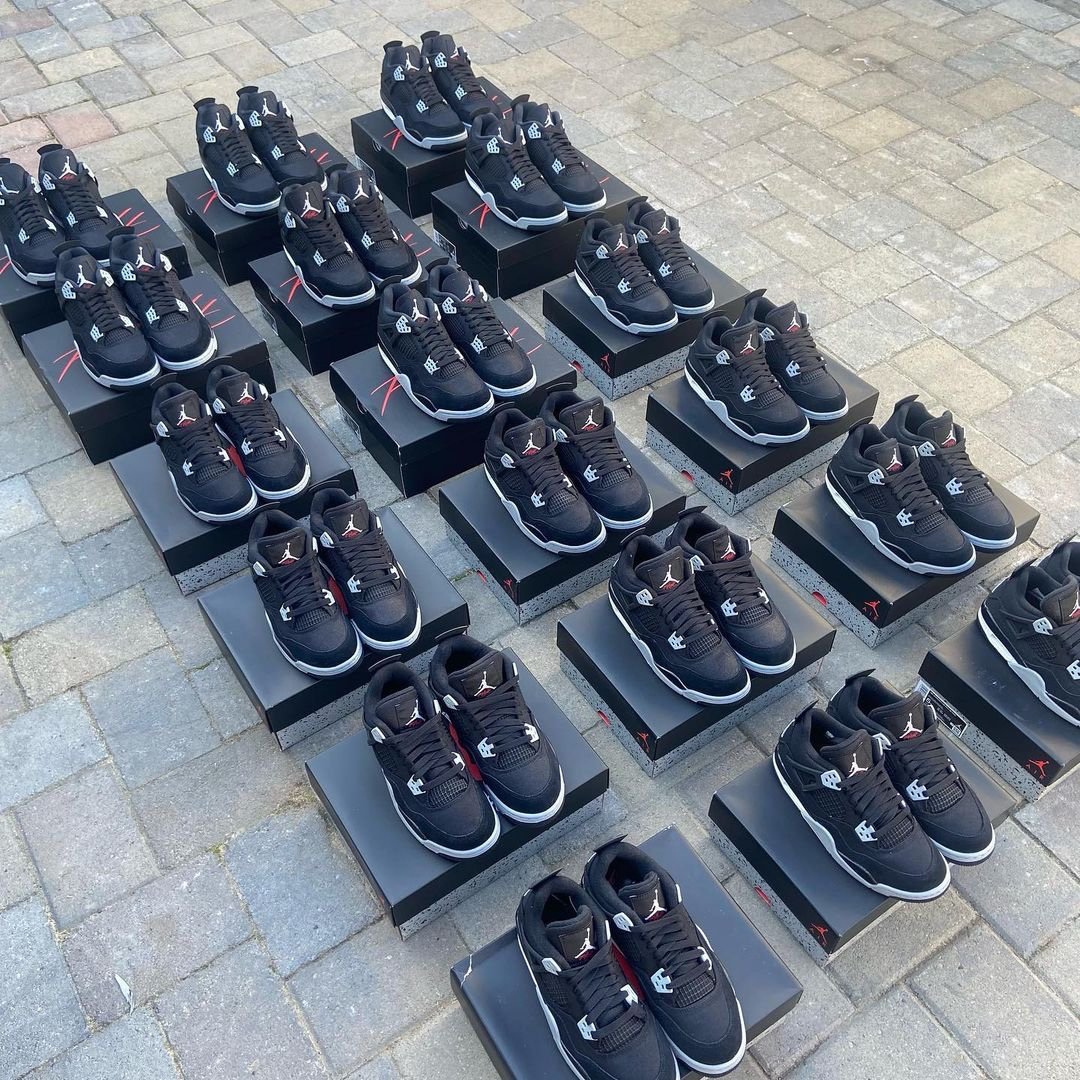





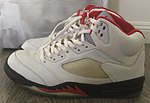

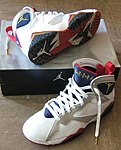













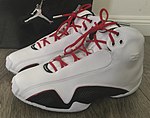





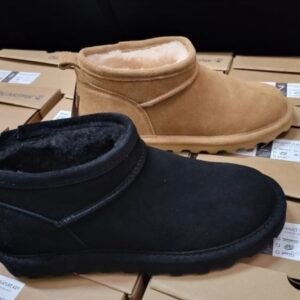
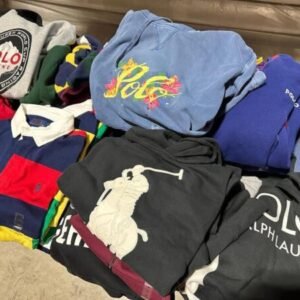

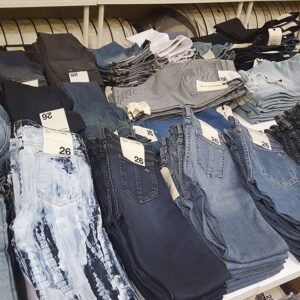
Reviews
There are no reviews yet.